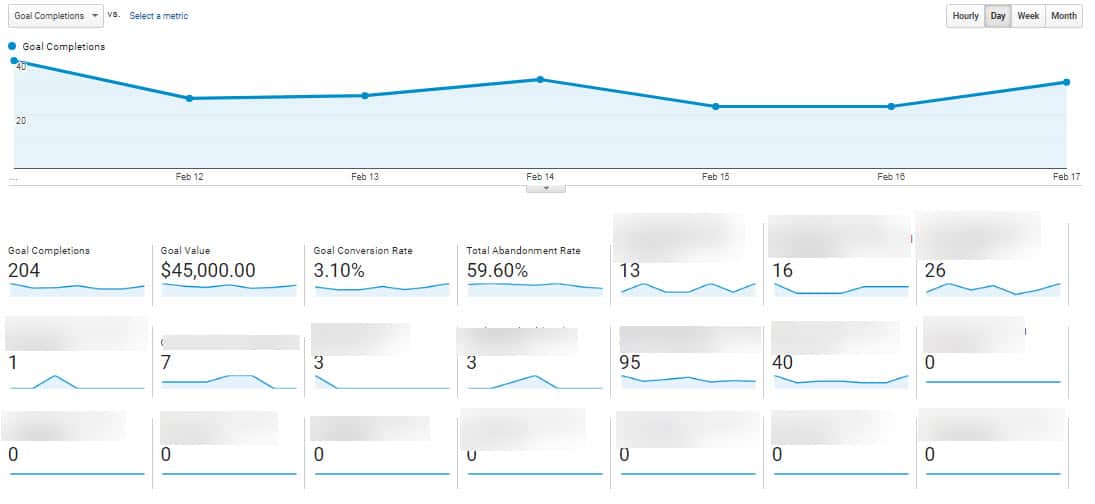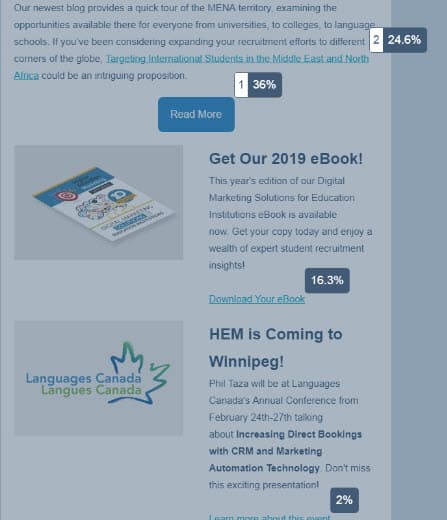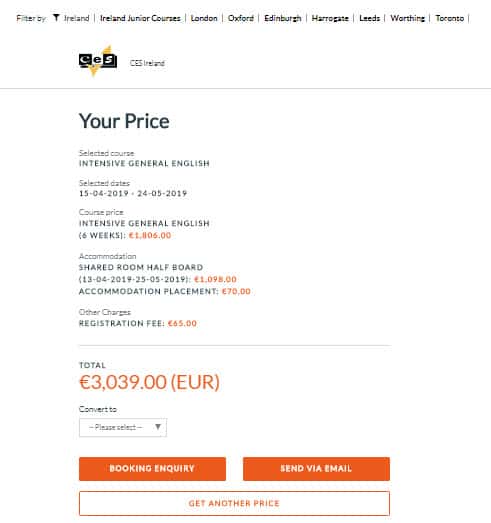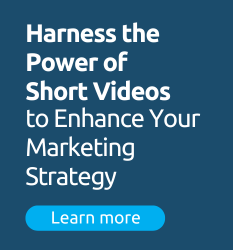
Let’s start with a simple thought experiment. Imagine you are working for a small school. You and your team have managed to build a small but well-managed online presence, generating around 8,000 visitors per month to your website. Of these prospects, around 80 will make inquiries about your courses.
Now imagine that your school is looking to increase the amount of inquiries they generate by 50%, which means generating 40 more leads monthly. It also means somehow attracting 4,000 more visitors to your website. Seems like a lot, doesn’t it?
This is the challenge that many schools face every day. More enrollments means generating more leads, which means generating more traffic. While you can always work to improve your visibility online, this can be easier said than done.
But what if, instead, you simply worked harder to convert more of the visitors you are already getting? That is the essence of conversion rate optimization (CRO), a strategic approach digital marketing experts use to maximize the potential of their existing online audience.
Essentially, it’s about doing more with less. Keep reading to find out how.
Doing the Math on CRO for Schools
As with many other elements of digital marketing, it’s helpful to approach CRO with a clear, measurable goal in mind, and a natural place to start is by looking at your current conversion rate. This is simply the number of prospects who convert by completing a particular desired action (filling out an inquiry form, making an application, etc.) divided by the total amount of visitors you attract:
Conversions/Total Visitors x 100 = Conversion Rate
In the example in the introduction, for instance, the aim is to increase the amount of inquiries generated from 80 to 120 per month. Since the school’s website attracts 8,000 visitors, that means increasing the conversion rate from 1% to 1.5%.
Going further down the funnel, your school might also want to assess the amount of its converted leads that go on to enrollment, or your lead-to-student conversion rate. Going back to the example, it might be a situation where 10 of the 80 leads generated per month go on to enroll, which is a 12.5% conversion rate.
This might seem fairly simple, but defining these numbers can be important to helping your team clarify its student recruitment conversion rate optimization goals, and exactly where there are opportunities to improve. For instance, if your ultimate objective is to increase your average monthly enrollments from 10 to 20, it could mean either improving your website’s conversion rate from 1% to 2% (in order to generate twice as many leads) or increasing your admissions team’s lead-to-student conversion rate from 12.5% to 25%. From there, your team can evaluate which goal is the most achievable, and how you can do it.
Macro vs. Micro Conversions in Student Recruitment
Another important thing to consider when developing a CRO strategy is what exactly a conversion means to your school. Since a conversion can be defined as any desired action a prospect takes online, there are countless things that can qualify as one. For simplicity, many marketers prefer to consider these activities in terms of two broad categories: macro conversions and micro conversions.
A macro conversion is usually defined as a completion of one of your organization’s primary objectives. In the context of inbound marketing for schools, this could mean a prospective student filling out an inquiry form so that their details can be passed to your admissions staff for follow-up, or booking a campus tour or interview, or even filling out an application online. These are clear, explicit steps that move a prospective student down the funnel.
However, there are also a number of other measurable activities that a prospective student can take which indicate that they are firming up their interest in your school and courses. They might download a PDF brochure, or comment on a blog, or watch a video. All of these things can help to further convince them to take the next steps towards enrollment, and their importance shouldn’t be underestimated.
Example: Geneva Business School offers prospective students the option to download brochures on their website without signup. This type of activity could be considered a micro conversion.

Exact definitions of what constitutes a micro or a macro conversion can vary, and there may be actions (such as using an online quote calculator tool, or signing up for a newsletter) that don’t fit neatly into one category or the other. However, thinking in these terms will help you to pinpoint all the opportunities available to your school to push prospects down the funnel more effectively, and crystallize your CRO strategy.
Your School’s CRO toolkit
CRO is all about analysis, testing and measurement, so it’s important to have the proper tools at your disposal to do it right. Here are a few of the things that will help you to explore your school’s conversion potential:
Web analytics tools- Everything from Google Analytics, to social media measurement platforms like Facebook Insights, to CRM and marketing automation reports contain valuable key performance indicators that tell you a lot about how and why users are converting. Figuring out where to find the information you need can be half the battle.
Example: The Goals Overview report in Google Analytics. GA Goals can be set to track various different types of conversions on your website, and even assigned monetary value based on their perceived worth.

Split testing tools– Not all of your CRO efforts will involve split testing, but certain activities like changes to CTAs, inquiry forms, or landing page designs can all be aided by running A/B or multivariate tests using purpose-built tools. For your website, Google Optimize is a free and easy-to-use option, while many marketing automation platforms like HubSpot also offer intuitive and insightful spit testing options.
Example: HubSpot allows users to create A/B variants of landing pages and test their performance.

Heatmaps and click maps- While not essential, analyzing heatmaps and click maps can tell you a lot about how your target personas are interacting with your website, showing you what parts of your pages they are focusing on, and what CTAs they are engaging with. Popular heatmap tools include Hotjar and Crazy Egg, while HubSpot also offers click maps for your emails, as well as data on reader behaviour.
Example: A snippet from a HubSpot email click map of one HEM’s recent newsletters.

Surveys- Another way to get more qualitative data is to survey your current student base for their opinions on their experience. This can help you to gain some more detailed insight into how your target personas behave and why.
Aside from your technical tools, you should also remember that you have a secret weapon: yourself. You and your team members shouldn’t underestimate just how useful it is just to log on to your website and experience it, putting yourself in the shoes of your target personas. Imagine what they might look for, what would interest them, and what would turn them off, then see what you find. The answers might just have been under your nose all along.
Conversion Rate Optimization on Your School’s Web Pages
CRO is often looked at in terms of individual page elements such as CTAs, inquiry forms, and navigation tools like menus and sidebars. However, it might be better to take a broader view, and examine specific sections of your website in order to evaluate whether the overall user experience you are offering is helping to drive users towards conversion.
Your homepage is one of the best places to begin. Usually the most frequent starting point for visitors to your website, it’s your best chance to make an immediate impression and drive users towards eventual conversion.
The first thing you should look at is the overall design, content, and navigability of the page. Does it clearly communicate your school’s unique selling points? Are the courses and programs you want to promote placed front and centre on the page? Does the site layout make it easy for prospective students to find what they are looking for? These are all important questions to ask, and will help you determine just how much work there is to do.
From there, you can pinpoint elements of the page which can be modified to improve your chances of increasing both micro and macro conversions. For instance, you might decide to place a CTA directing to particular course pages to encourage more prospects to explore your offerings in more depth. Likewise, you might want to include a lead capture form on your homepage to your increase your chances of immediately converting visitors. Once you get started, you’ll be surprised by just how many chances you have to push prospects to take the next step on your homepage alone.
Example: Bright School of English’s homepage is well-optimized for conversion, and includes 4 distinct CTAs. Can you spot them all?

Your program pages are also likely to be ripe for CRO. Directing users to relevant additional content such as course curriculum information, admissions guidelines, scholarship and financing information, and even downloadable brochures can all help to give them a clearer picture of what you are offering, and increase the likelihood that they make an inquiry. Offering opportunities to book tours or contact admissions team members can also be a good idea when they reach this part of your site.
Example: A snippet of the program page for one of WU Executive Academy’s MBA programs, which is incredibly well-optimized. Users are directed to make macro conversions by registering for an event, or clicking on one of the ‘Next Steps’ options to arrange a consultation, request information, get a brochure or apply. Prospective students earlier in the enrollment journey are also well-served, with links to further information, related blog posts, and a downloadable schedule all offered to help them find out more.

Landing pages, of course, should be optimized for conversion as much as possible, and split testing can be one of the best ways to measure their effectiveness. Try making changes to CTA placements, forms and other components, and use marketing automation to carry out A/B tests to evaluate their effect. You can also experiment with different copy in the body of your pages to see whether the tone, length, or detail of your content is optimized for conversion.
Example: Two versions of an inquiry form that were prepared for a landing page A/B test. The control page included a question about the prospect’s budget, while the variant removed it. Little details like this can sometimes makes a big difference in conversion. 
Blogs, videos, infographics and other inbound marketing content can also benefit from CRO. For instance, if you have a blog which attracts a high amount of traffic but fails to drive prospective students down the funnel, examine its content to see where you are going wrong. Does the piece deliver on the promise of the title? Is the information up to date and relevant to your audience? Are you providing readers who land on the page with a clear path towards conversion through CTAs, forms and other on-page elements?
It may be something that’s easy to fix. HubSpot, for example, found that their button CTAs where falling victim to the phenomenon of ‘banner blindness,’ where a reader will automatically ignore any element of a page that looks like an ad. They replaced them with mid-page text CTAs that were styled like their headers, and saw a dramatic increase in clicks.
Example: ASC A+, an afterschool enrichment program provider in Boston, use text CTAs at the end of their blogs, so that the prospect’s eye flows naturally to them as they read through the piece.

There are countless other places on your site that can benefit from CRO. Pages about financing or pricing, for instance, may be the last port of call for a prospect who is seriously interested in your courses, so prompting them to make an inquiry could reap dividends. Similarly, a potential applicant looking at your accommodation pages could be taken as an indication that they are seriously considering studying at your school. The key is to leave no stone unturned as you examine your online presence, and try to be open to possibilities for conversion in even the most unlikely places.
Remarketing Can Help Your School Boost Conversions
Remarketing can also be a valuable addition to your student conversion rate optimization strategies. When a prospective student visits your site but fails to convert, it doesn’t necessarily mean they are not interested. They may not be ready to make a decision yet, be looking at other options, or just need a little extra persuasion.
Running remarketing campaigns to target previous visitors to your site through social media, search, and display ads can be an excellent way to bring your school to the forefront of their minds again. With a little help from some neatly crafted, persuasive ads and landing pages, you could quickly see your overall conversion rate improve.
Could You Use CRO to Accelerate the Enrollment Journey?
Providing valuable content to nurture prospective students gradually through the enrollment journey is a key part of a good inbound marketing campaign. However, it’s important to remember that while most potential applicants will take their time deciding, others might be more willing to move through the process a little more quickly.
While you shouldn’t bombard prospects with overly pushy CTAs at every turn, you can provide leads who complete significant micro conversions with the opportunity to take the next steps immediately if they want to. For instance, if a prospect completes a landing page to download a brochure or course price list, you could direct them to a thank you page which offers them the chance to book a tour or an appointment with an admissions representative. Similarly, many schools who use online quote tools will offer users the option to proceed directly to making an application or booking after they have finished.
Example: CES Ireland provides a free quote tool on its website. Once a prospect has been given their price, they have the option to recalculate it, have it sent to them via email, or proceed and make an inquiry straight away. Offering this last option can be a great way for schools to increase their chances of conversion.

Those who are ready to apply can do so, while those who need more time have been given valuable information that could help them to make their decision in the future. When done subtly and with your prospective student audience’s best interests in mind, it can be a win-win for everyone.
Marrying Conversion Rate Optimization to Your Admissions Workflows
Conversion rate optimization for student recruitment doesn’t just stop with your school’s visible online presence, and a comprehensive strategy will carry over to your follow-up activities once a lead has been registered in your system. For a start, you can use marketing automation to create workflows for your admissions team, which can include email and SMS templates to help ensure your follow-up is regular and timely with every prospect.
Some marketing automation platforms will also allow your team to track significant micro conversions from specific leads once they have been captured in your system, such as web page views, social media engagement, and downloads of specific assets. Your team can monitor these activities and use them to identify prospective students who are showing large amounts of interest for personalized follow-up.
Example: HubSpot allows you to track web page views from existing leads.

Lead scoring can be useful for this purpose, as your school can assign scores to specific actions and set triggers in your workflows when potential applicants pass certain thresholds. This can allow you to catch prospects when they are most engaged, and make the most of their interest.
Creating Strong Hypotheses for Your Student Conversion Rate Optimization Strategies
CRO is about more than just placing a CTA here or an inquiry form there. It’s about making a choice to approach all of your digital marketing activities with a meticulous eye, and the aim to maximize your possible returns.
For that reason, most experts recommend you approach CRO with a strong hypothesis, with a solid reasoning behind your actions that is grounded in what you know about your target audience. While this sounds very scientific, it doesn’t have to be complex. It can be something as basic as “We will convert more leads if we place an inquiry form in the sidebar of our blog posts, because a lot of prospective students read them.” Then you make the change, and see what results you get.
This approach will keep your CRO efforts focused, and ensure that your team are making changes based on a solid strategy that will result in lasting improvements instead of just short-term boosts.
As WiderFunnel CEO Chris Gower put it in an excellent article for neilpatel.com, “tacticians focus on following “best practices” and improving metrics like conversion rate. Conversion strategists, on the other hand, focus on building a repeatable strategic process that creates powerful hypotheses and insights in order to fulfill business goals.”
This, in essence, is how you should think about CRO. Consider your current approaches, identify where you can make changes, test them, and evaluate your results, all the while keeping student experience and long-term goals at the forefront of your mind. Even the smallest improvement in your conversion rates could result in massive returns for your school, often at a fraction of the cost and effort it might take to attract more traffic.







